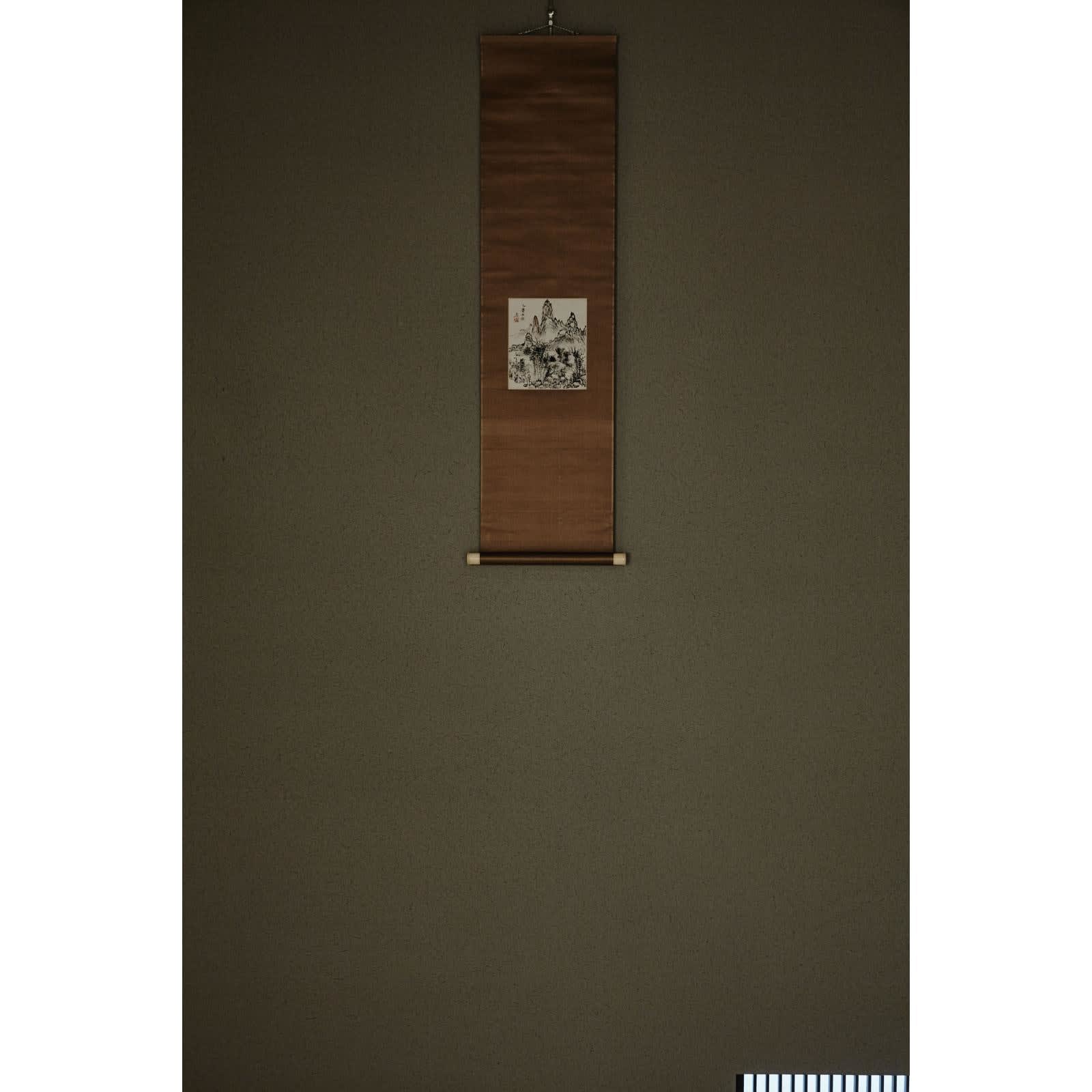Urakami Gyokudō (1745–1820)
Untainted by Even a Speck of Dust
Ink and light color on paper, hanging scroll
With box authentication by Tajika Chikuson (1915)
Seal: Suikyo
16.8 x 14.5 cm
99 x 25 cm (overall)
With box authentication by Tajika Chikuson (1915)
Seal: Suikyo
16.8 x 14.5 cm
99 x 25 cm (overall)
Further images
Provenance
Collection of Ito Family (Aichi)
Many of Urakami Gyokudo’s works consist of landscape paintings. His compositions primarily capture a thick growth of trees in the foreground with towering peaks in the back. The tall mountains may partially be due to the oblong format of the painted surface here, though this does not seem entirely to be the reason. As seen in Wondrous Peak, Linked Tall (Nyoi Donin shushu shogajo, Idemitsu Museum of Arts), which comprises only of pointed cones, Gyokudo tended to favor ascend- ing forms. The artist also adhered to this inclination in rendering the mountains. Though not graphic like Wondrous Peak, Linked Tall, this somewhat realistic work resembles Pine Wind and Autumn Stream in Collection of Smoke and Mist (Enkajo, Umezawa Memorial Museum).
In several Gyokudo’s works, the ascending tendency accelerates as the vertical dissipates, causing the peak to appear as if swaying to the right and left. In the hanging scroll here, however, the mountains line up orderly and the verticalness is emphasized. The disheveled trees in the foreground further heighten the sense of the background verticality, and between the sceneries in the front and the back extends a waterscape, which makes the peaks appear relatively smaller and further, giving the entire landscape an expansive feel. Anyone who first sees a photograph of this painting and later sees the actual work will undoubtedly be surprised at its small size.
Although the mountains here resemble Pine Wind and Autumn Stream in Collection of Smoke and Mist, which Gyokudo painted around the age of sixty-seven, the expression of the range is also similar to Crossing a Bridge Deep in the Mountains (Shinzan tokyo zu, Aichi Prefectural Museum of Art), which he made at the age of seventy-four. This work also likely dates to around the same period, when the artist was in his seventies.
Urakami Gyokudo (painter; 1745–1820)
Also known as Tasuku; Hitsu; Kunho; Hyoemon; Bokusai.
Bizen-born literati painter in the late Edo period. After serving the domain of Okayama feudal clan, Gyokudo traveled around with his koto (Japanese harp). Acquainted with literati such as Tanomura Chikuden, Kimura Kenkado, Tani Buncho, and Okada Beisanjin. Settled in Kyoto in his late years. Although a self-taught painter, he notably embraces a freewheeling style in sansui (landscape) paintings, which reached the height of the Japanese nanga.
In several Gyokudo’s works, the ascending tendency accelerates as the vertical dissipates, causing the peak to appear as if swaying to the right and left. In the hanging scroll here, however, the mountains line up orderly and the verticalness is emphasized. The disheveled trees in the foreground further heighten the sense of the background verticality, and between the sceneries in the front and the back extends a waterscape, which makes the peaks appear relatively smaller and further, giving the entire landscape an expansive feel. Anyone who first sees a photograph of this painting and later sees the actual work will undoubtedly be surprised at its small size.
Although the mountains here resemble Pine Wind and Autumn Stream in Collection of Smoke and Mist, which Gyokudo painted around the age of sixty-seven, the expression of the range is also similar to Crossing a Bridge Deep in the Mountains (Shinzan tokyo zu, Aichi Prefectural Museum of Art), which he made at the age of seventy-four. This work also likely dates to around the same period, when the artist was in his seventies.
Urakami Gyokudo (painter; 1745–1820)
Also known as Tasuku; Hitsu; Kunho; Hyoemon; Bokusai.
Bizen-born literati painter in the late Edo period. After serving the domain of Okayama feudal clan, Gyokudo traveled around with his koto (Japanese harp). Acquainted with literati such as Tanomura Chikuden, Kimura Kenkado, Tani Buncho, and Okada Beisanjin. Settled in Kyoto in his late years. Although a self-taught painter, he notably embraces a freewheeling style in sansui (landscape) paintings, which reached the height of the Japanese nanga.









